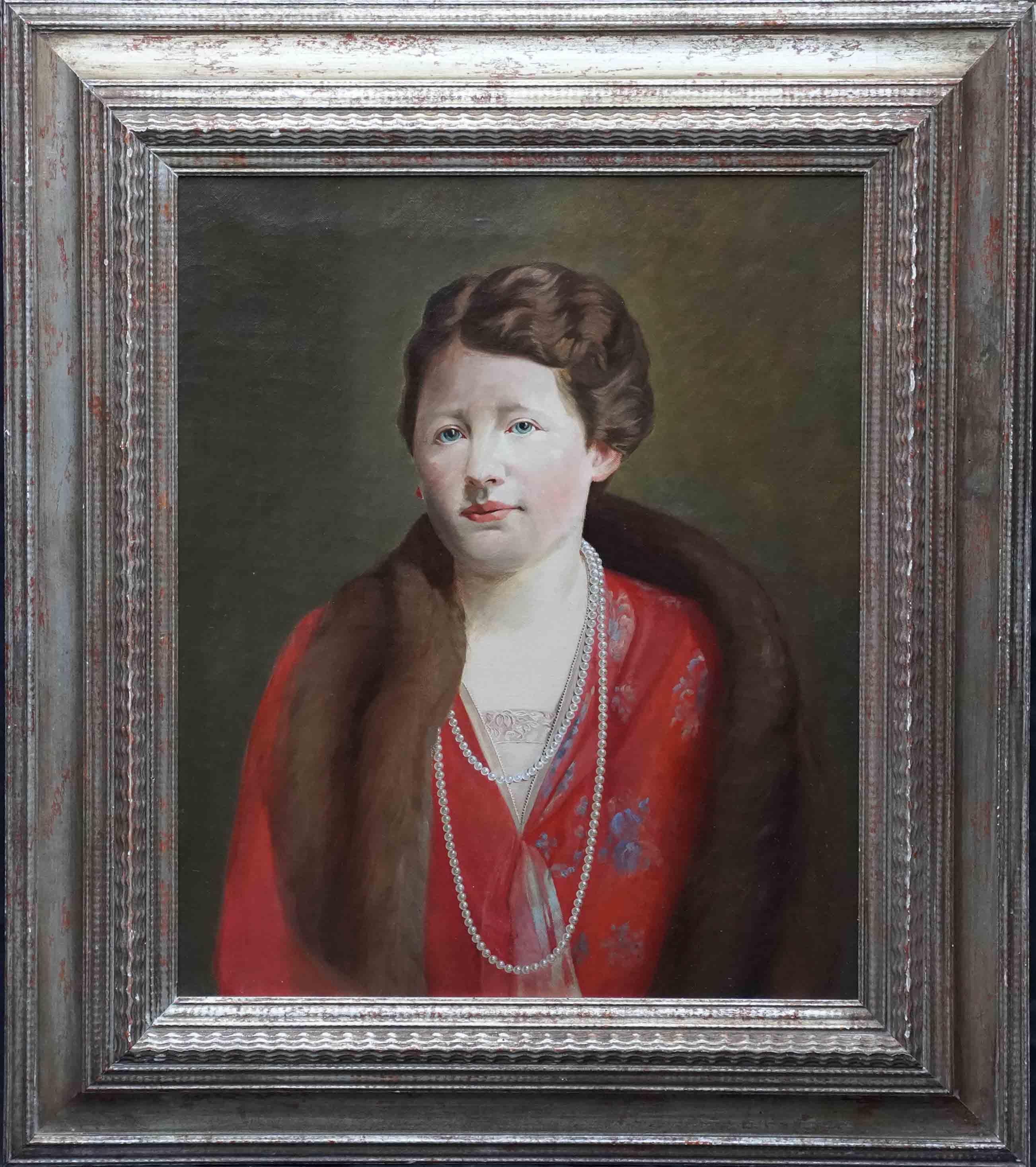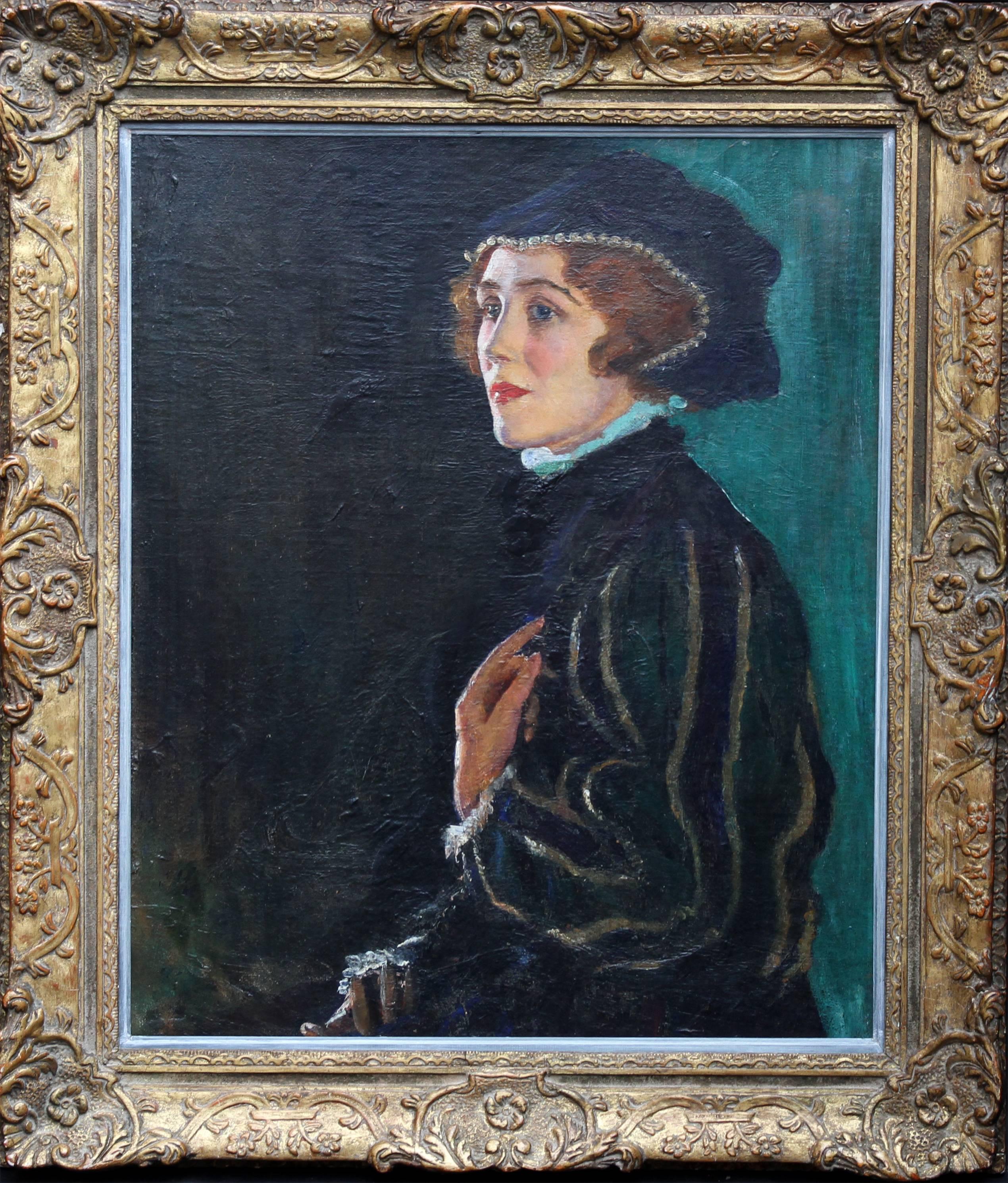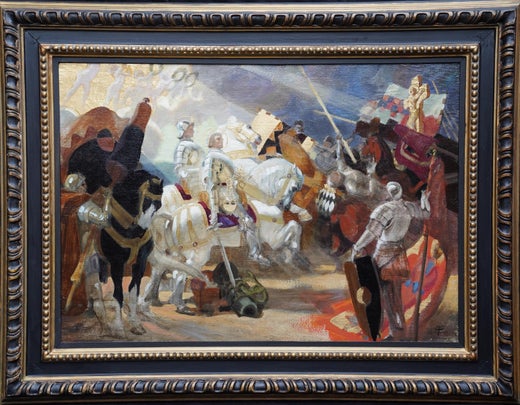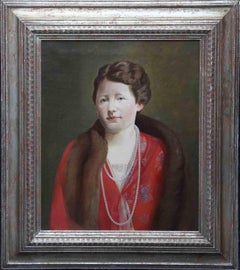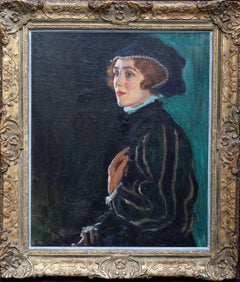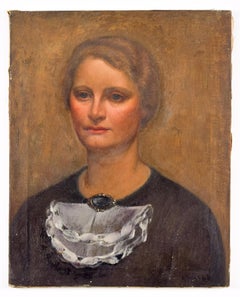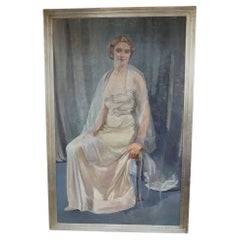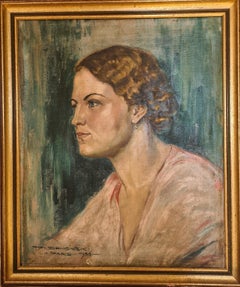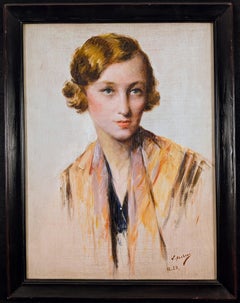Frank Owen SalisburyPortrait of a Bride - British 1934 Romantic art female portrait oil painting1934
1934
About the Item
- Creator:Frank Owen Salisbury (1874 - 1962, English)
- Creation Year:1934
- Dimensions:Height: 36 in (91.44 cm)Width: 31 in (78.74 cm)Depth: 2 in (5.08 cm)
- Medium:
- Movement & Style:
- Period:
- Condition:
- Gallery Location:London, GB
- Reference Number:1stDibs: LU853114374602
Frank Owen Salisbury
Frank Owen Salisbury was an English artist who specialized in portraits, large canvases of historical and ceremonial events, stained glass and book illustration. In his heyday, Salisbury was valued and admired on both sides of the Atlantic. In 1901, Salisbury married Alice Maude with whom he had twin daughters. His first Royal Academy exhibit was a portrait of Alice. It is for portraiture that Salisbury is best known. His speed in producing portraits stemmed from his painting his twin daughters every morning for an hour and his career began with child portraiture and his painting the Hertfordshire gentry and members of the Harpenden Methodist Church. Salisbury had a studio at his home, Sarum Chase. A providential meeting with Lord Wakefield, founder of Castrol Oils and a Methodist philanthropist, saw his introduction to society portraiture. Salisbury's being selected to paint the Boy Cornwell in the Battle of Jutland then brought him to the notice of Royalty. Lord Wakefield then arranged for him to paint President Woodrow Wilson whilst he was in London, but Wilson departed for Paris and the opportunity was lost. It was to be John W. Davis, American Ambassador to London, who encouraged Salisbury to go to the USA; Davis had met Salisbury at art receptions and had admired his child portraits. 25 members of the Royal House of Windsor sat for Salisbury and he was the first artist to paint HM Queen Elizabeth II. Salisbury painted Winston Churchill on more occasions than any other artist; the two iconic images of Churchill - The Siren Suit and Blood, Sweat and Tears are both Salisbury images. Other significant portraits include those of Richard Burton, Andrew Carnegie, Sir Alan Cobham, Sir Robert Ludwig Mond, Maria Montessori, Montgomery of Alamein, Earl Mountbatten of Burma, Benito Mussolini, John Player, Lord Rank, Jan-Christiaan Smuts and Sir Henry Wood. Salisbury was remarkably successful in the USA where he was deemed to have fulfilled the American Dream. Salisbury made 13 visits and painted six Presidents with his Franklin D. Roosevelt remaining as the official White House portrait to this day. Industrial and financial giants who sat for him included Henry Clay Folger, Elbert Henry Gary, Edward Stephen Harkness, Will Keith Kellogg, Andrew William Mellon, John Pierpont Morgan, George Mortimer Pullman, John Davison Rockefeller Jr. and Myron C. Taylor.
- ShippingRetrieving quote...Shipping from: London, United Kingdom
- Return Policy
More From This Seller
View All1940s Art Deco Portrait Paintings
Oil
1930s Art Deco Portrait Paintings
Oil
1930s Realist Portrait Paintings
Oil
1920s Realist Portrait Paintings
Oil
1930s Realist Portrait Paintings
Oil
1920s Art Deco Portrait Paintings
Oil
You May Also Like
1930s Figurative Paintings
Canvas, Oil
Vintage 1940s English Paintings
Paint
1930s Portrait Paintings
Oil, Canvas
1920s Impressionist Portrait Paintings
Oil, Panel
Vintage 1920s Danish Belle Époque Paintings
Canvas
Mid-20th Century Victorian Portrait Paintings
Oil

